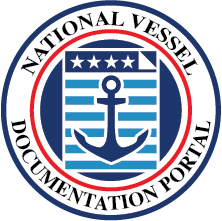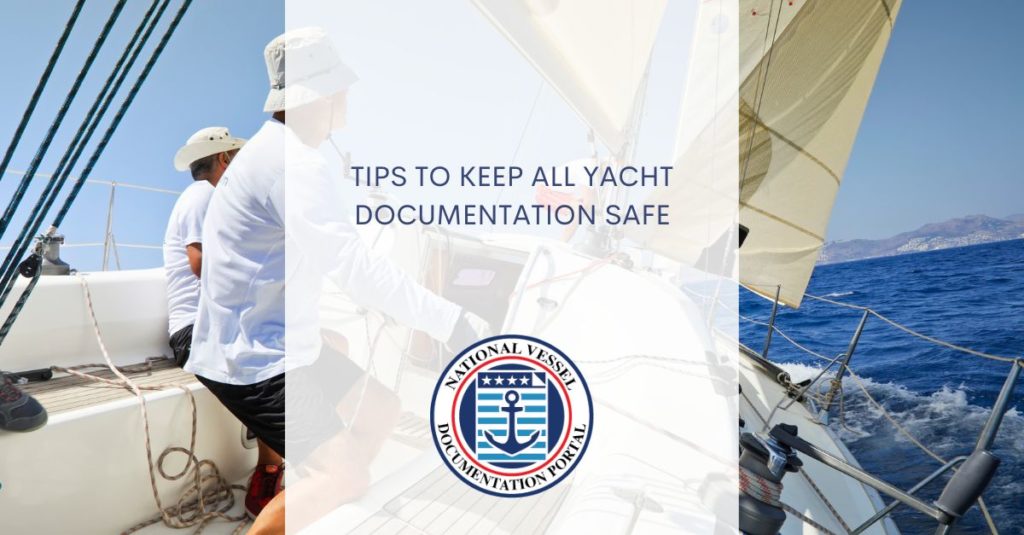Are you the pleased owner of a United States Coast Guard vessel? If this is the case, you know the significance of ensuring that all yacht documentation is always brought up to date. It is necessary that all documentation be protected at all times, regardless of whether the information it contains pertains to the vessel itself, records of the needs for its upkeep, or simple confirmation of ownership.
This article will provide some helpful hints to ensure that your yacht’s paperwork is kept secure. We will provide you with practical guidance on how to back up electronic papers, maintain the security of physical documents, and when particular pieces of documentation should be appropriately updated. Whether you own an off-shore cruiser or a weekend party boat, we’ll show you how organizing things can make the days ahead more enjoyable and stress-free.
Keep Copies of Everything
A Coast Guard registration number is required by federal law for any vessels above 15 feet in length. Also, preserve a backup copy of each registration paperwork if the original is lost or destroyed. Depending on the rules in your state, you may also be required to pay registration costs. You may be sure that your boat’s license renewal will be remembered in light of this.
Make sure no unauthorized individuals have sensitive documentation on board. Always have someone available at the marina where you are storing your yacht, familiar with the papers you have on board and authorized to sign off on any problems that may arise while you are away from home port.
Keep Your All Yacht Documentation Up-To-Date
The papers you’ve collected for your boat are crucial. For instance, a yacht’s Certificate of Registry proves that it is correctly registered in the jurisdiction where it is now moored. Any ship above 24 meters (79 feet) must undergo a flag state survey to ensure its seaworthiness.
Maintaining all yacht documentation ensures continued adherence to all applicable rules. If your paperwork expires for more than six months, authorities like the United States Coast Guard will not let you fly your national flag. Maintaining regulatory compliance necessitates updating paperwork every two years or upon a change in vessel ownership or name.
One example is re-conducting a survey every three years after it has been out of date for longer than that. Get copies of the previous owner’s documentation if you’re buying a pre-owned yacht; they will be used to issue your documents at the time of purchase.
Store Paperwork in Multiple Locations Aboard Your Vessel
Stay confident with your boat’s documentation storage after you have built the yacht and gone through the certification and licensing procedure. It’s more than simply a question of convenience; it’s also an issue of security.
During a yacht’s first safety check, the first question is often, “Where do you store your documents?” Having them all in one location may appear harmless, but it increases the danger of harm to you and your team. The safest option is to keep all yacht documentation in separate places on board.
Keep one set in a watertight container within the boat and another in a waterproof container outside the ship as a minimum (if possible). That way, if one set is ruined while out on the deck in bad weather, you can easily replace it with a dry copy from within the vessel. By taking this one easy step, you may save the hassle and expense of replacing misplaced or destroyed paperwork.
Do Not Leave Them Unattended
Stay confident with your boat’s documentation storage after you have built the yacht and gone through the certification and licensing procedure. It’s more than simply a question of convenience; it’s also an issue of security.
During a yacht’s first safety check, the first question is often, “Where do you store your documents?” Having them all in one location may appear harmless, but it increases the danger of harm to you and your team. The safest option is to keep many copies of your paperwork in separate places on board. Keep one set in a watertight container within the boat and another in a waterproof container outside the ship as a minimum (if possible).
That way, if one set is ruined while out on the deck in bad weather, you can easily replace it with a dry copy from within the vessel. By taking this one easy step, you may save the hassle and expense of replacing misplaced or destroyed paperwork.
Regarding all yacht documentation, keeping document protection up-to-date with the latest regulations is vital, or you could find yourself with hefty fines. A simple way to do this is by contacting your local U.S. Vessel Documentation Center by phone. The staff will answer any questions about yacht documentation and help you understand what your next steps should be. If they can’t help, they’ll tell you who can, so there’s no chance of confusion or misdirection.


